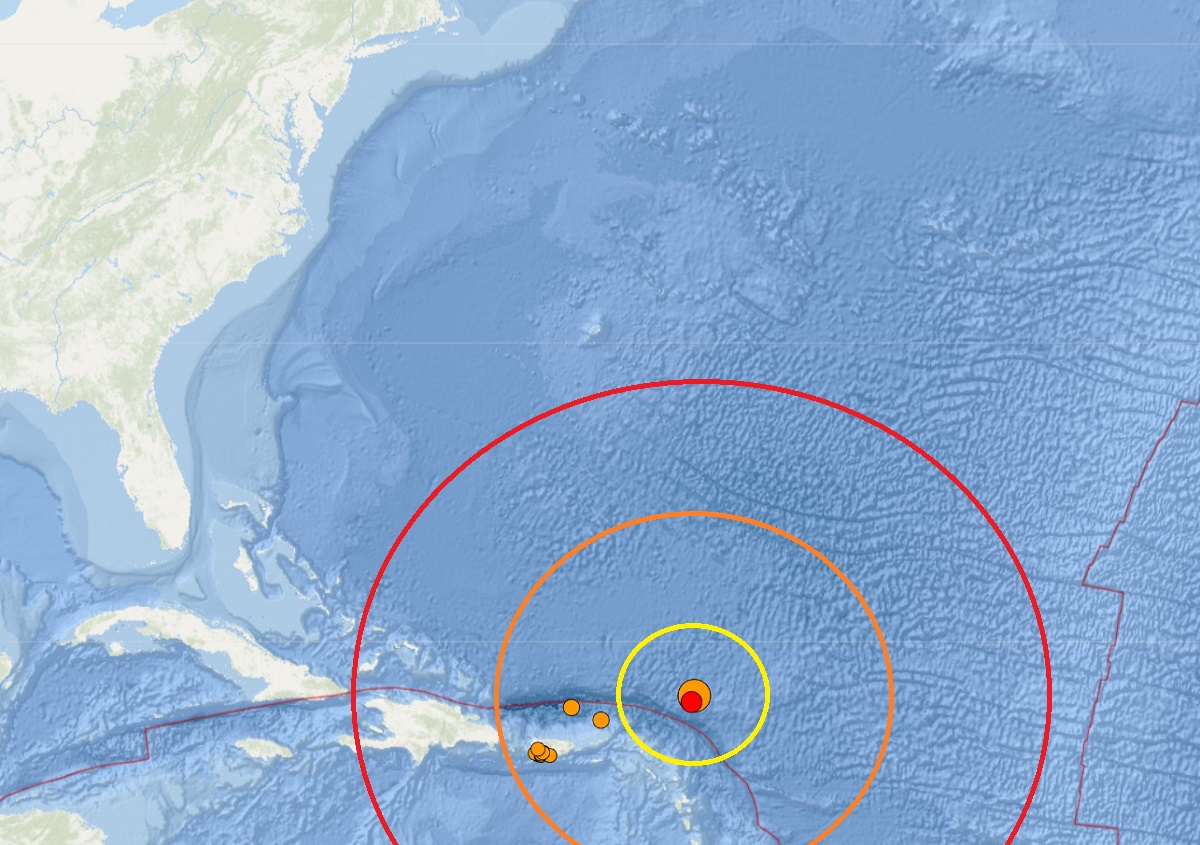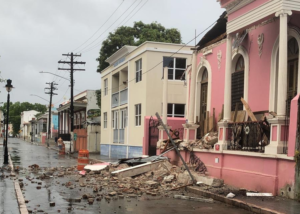
An unusually strong magnitude 6.6 earthquake rocked the Atlantic Ocean this afternoon, roughly 350 miles east of San Juan, Puerto Rico and roughly 125 miles north of Antigua and Barbuda. According to USGS, the epicenter was located at a depth of 9.9 km; the quake struck at 4:28 pm Eastern Time. The 6.6 magnitude earthquake was followed by a nearby 4.2 magnitude aftershock, which struck from a depth of 9.9 km. The second earthquake struck at exactly 5 pm ET. The National Weather Service’s Tsunami Warning Center (TWC) in Palmer, Alaska has issued many bulletins about this seismic event, assuring residents there is no tsunami threat at this time.
Tsunamis are giant waves caused by earthquakes or volcanic eruptions under the sea. Out in the depths of the ocean, tsunami waves do not dramatically increase in height. But as the waves travel inland, they build up to higher and higher heights as the depth of the ocean decreases. According to the National Ocean Service, the speed of tsunami waves depends on ocean depth rather than the distance from the source of the wave. Tsunami waves may travel as fast as jet planes over deep waters, only slowing down when reaching shallow waters. While tsunamis are often referred to as tidal waves, this name is discouraged by oceanographers because tides have little to do with these giant waves.
According to the TWC, in a statement released at 5:35 pm ET, “there is no tsunami danger for the U.S. east coast, the Gulf of Mexico states, or the eastern coast of Canada. Based on earthquake information and historic tsunami records, the earthquake is not expected to generate a tsunami.”

The National Weather Service’s Pacific Tsunami Warning Center in Honolulu, Hawaii also issued a bulletin around the same time for Puerto Rico and the U.S. and Virgin British Islands. “People may have experienced shaking from the earthquake. Based on all available data, there is no tsunami threat to Puerto Rico, the U.S. Virgin Islands, or the British Virgin Islands from this earthquake,” the Honolulu team released in a bulletin.
In the last 24 hours, there have been 15 earthquakes around Puerto Rico; the two quakes that struck this afternoon have been the strongest in the series.
Most of today’s earthquakes aren’t far from the epicenter of a strong earthquake that hit in January 2020. That 6.4 created extensive damage in Puerto Rico, including widespread power failures across much of the island. An earthquake swarm started here in December 2019 and unrest has continued since. 295 earthquakes have hit in the last 39 days in and near the January 2020 epicenter area; there have been 68 in the last 7 days.
These earthquakes are occurring near the northern edge of the Caribbean Plate, a mostly oceanic tectonic plate underlying Central America and the Caribbean Sea off of the north coast of South America. The Caribbean Plate borders the North American Plate, the South American Plate, the Nazca Plate, and the Cocos Plate. The borders of these plates are home to ongoing seismic activity, including frequent earthquakes, occasional tsunamis, and sometimes even volcanic eruptions.
The U.S. Government holds annual tsunami drills for the U.S. East and Gulf Coasts each spring with a variety of international agencies and partners. While Hawaii, Alaska, and the U.S. West Coast are more prone to earthquakes and tsunami, catastrophic tsunami could occur on the east coast too.